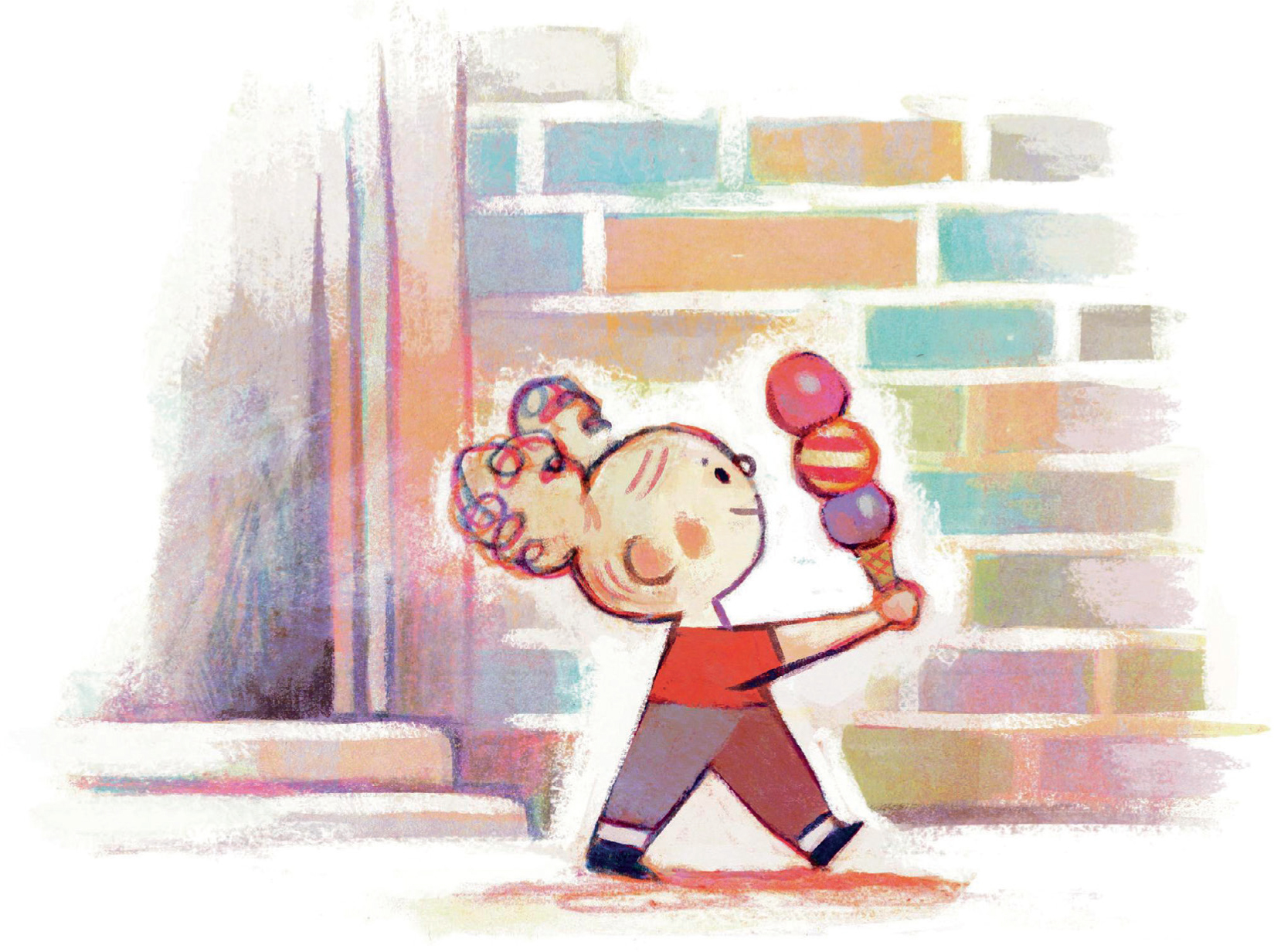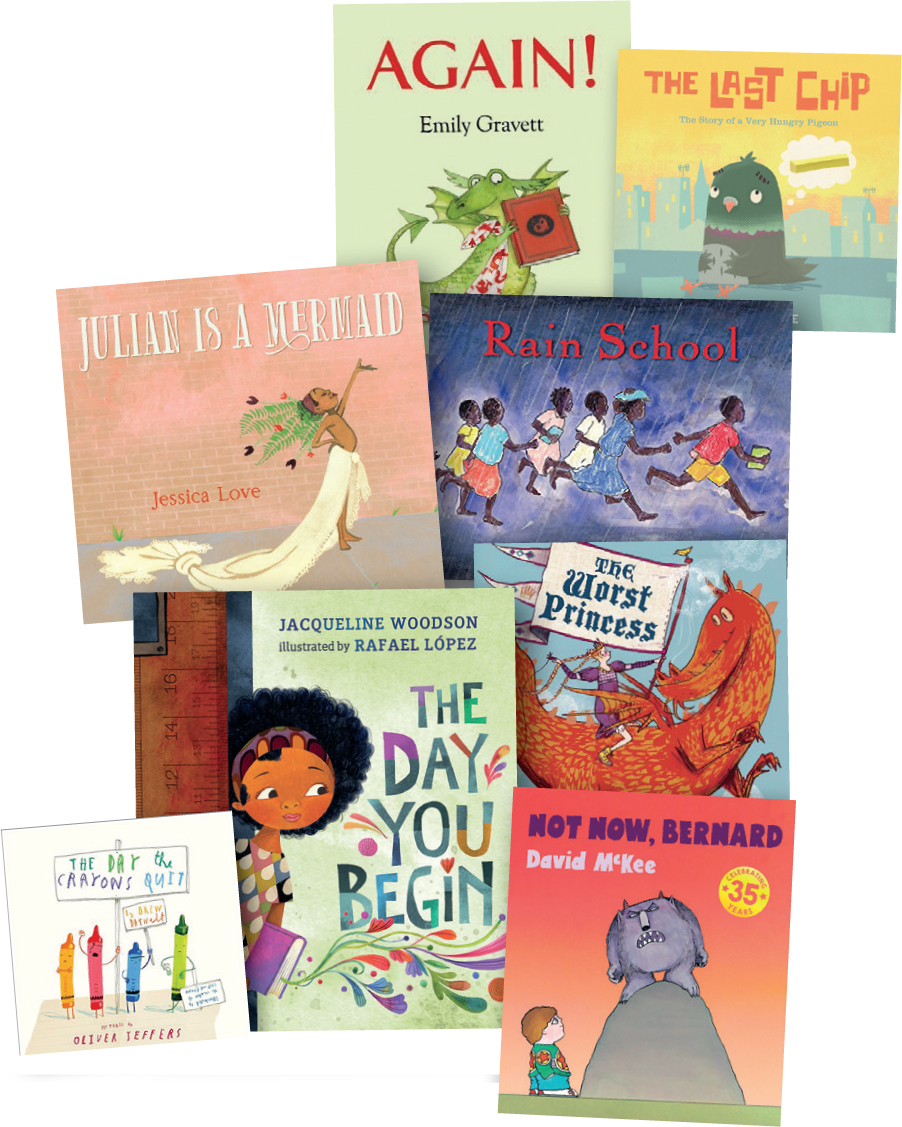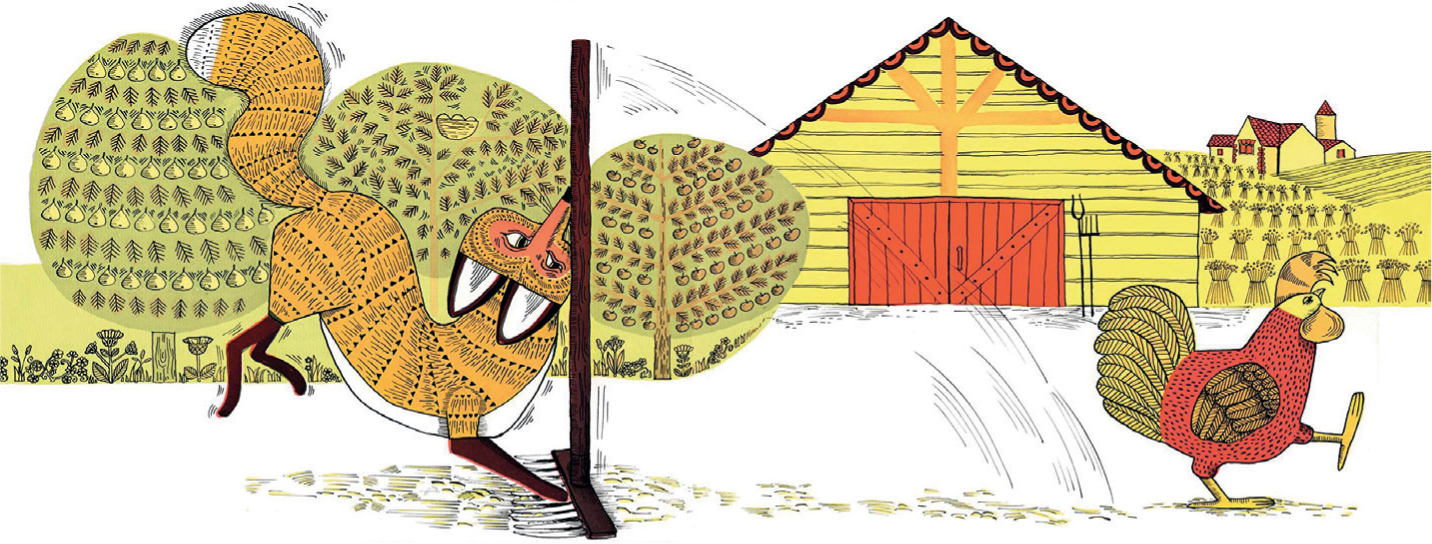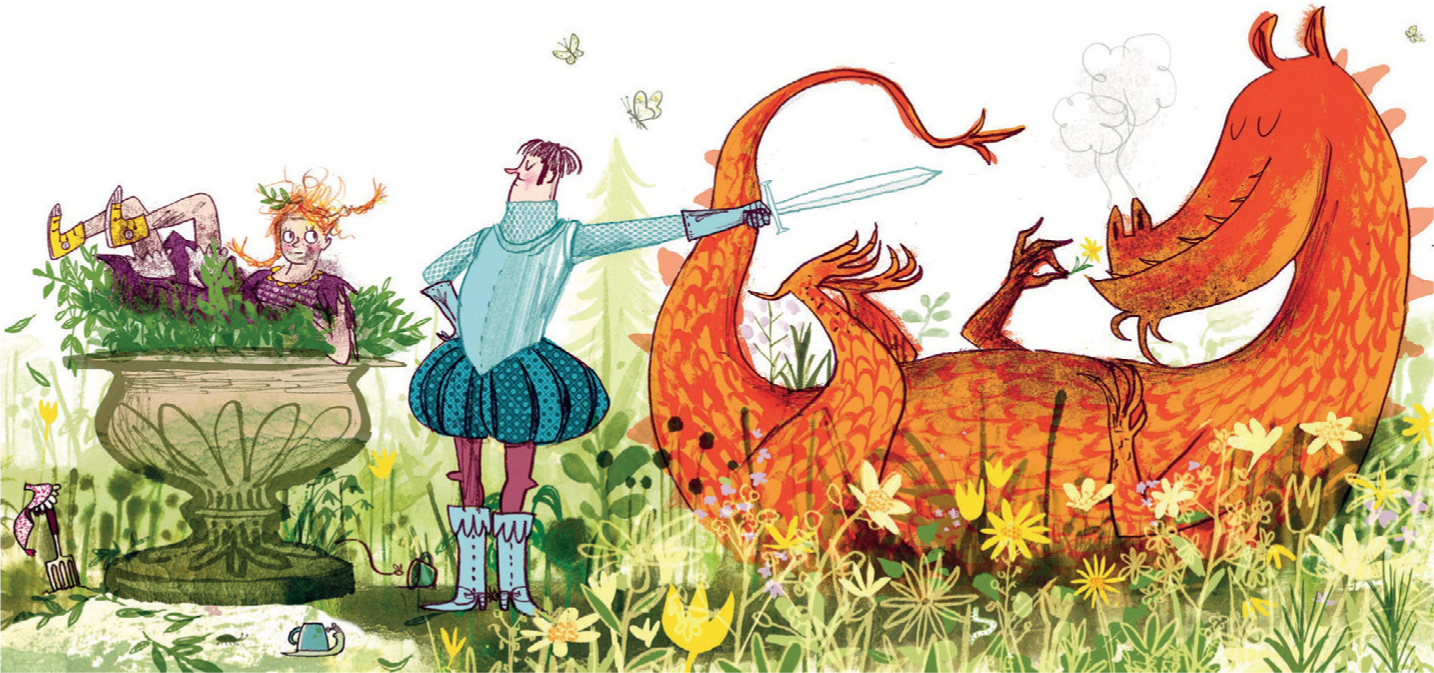All about … picturebooks
Andy McCormack
Monday, September 30, 2019
Reinvigorate your appreciation of picturebooks with this why, what, how and where guide to selecting and using them. By Andy McCormack

Download the PDF of this article
Picturebooks are a central artefact in the nursery world, and beloved by adults and children alike. They are the most commonly used resource by practitioners, reached for first thing in the morning and last thing in the aft ernoon, and oft en the teaching tool with which children are most familiar before setting foot inside their first nursery, Children's Centre or classroom.
They provide a cornerstone to the updated Statutory Framework for the Early Years Foundation Stage, which states explicitly that ‘it is… crucial for children to develop a life-long love of reading’ – and the ‘promotion of personal development… through literature’ is one of the sources of evidence Ofsted cites in its 2019 School Inspection Handbook for excellence in teaching and learning.
Significantly, the revised EYFS also notes that ‘by reading books in class and demonstrating their own enjoyment, teachers will pass on the joy of reading’. That a sense of enjoyment from practitioners is singled out for emphasis alongside the usual criteria is striking, and absolutely encouraging.
Amid current anxieties about how best to close the vocabulary gap between children from literature-rich backgrounds and those arriving at settings with little exposure to quality books – coupled with the ongoing focus on synthetic phonics in teaching early literacy – practitioners could be forgiven for not prioritising their own enjoyment of the texts!
At the heart of an early years literacy curriculum, and indeed early years practice, however, must remain the passing on of ‘the joy of reading’. In this guide follows some resources to help you reinvigorate the selection in your book corner and, hopefully, some time to pause and reflect on the role of picturebooks in your practice beyond that of a tool to be mined for assessment and measuring development. Let's celebrate the picturebook!
WHY DO WE READ PICTUREBOOKS?
Cognitive psychologists Gary Jones and Caroline Rowland of the universities of Nottingham Trent and Liverpool, in a ground-breaking 2017 study, found that as a child develops ‘it is the diversity of the vocabulary they hear that becomes more effective than the quantity in boosting their vocabulary size and influencing how easily new words can be learned’.
Following this, Padraic Monaghan, Professor of Cognition at Lancaster University and co-director of the International Centre for Language and Communicative Development, notes in an article for the National Literacy Trust on ‘closing the gap’ that ‘shared book reading expands vocabulary exposure because books tend to contain a wider vocabulary than spoken language’.

The Bad Mood and the Stick is among more recently published picturebooks
To these I would add that practitioners' enthusiasm and appreciation for innovative, high-quality and interesting picturebooks are the final, and perhaps most important, component in truly enriching conversation generated by sharing stories. Good books, and good discussion, can make all the difference not only in ‘closing the gap’, but in fostering a lifelong love of literacy and learning.
Before thinking further about the power of picturebooks in an educational and care-giving setting, take a look at the room around you. We live in a visual culture: images bombard us from every direction, more so than ever with the advent of smartphone technology and tablet computers. We need words to know how to ‘read’ the pictures around us: talking about what we see, hear and feel comes from our first experiences with the world of pictures which are fixed down on the pages of a book.
Margaret Meek, a pioneer in researching how children read picturebooks in the early 1980s, believed that ‘a mother looking at a picture book with a four-year-old who is telling her a story about it, is doing something essentially the same as a university tutor discussing a text with a student’.
VARIETY IN THE BOOK CORNER: TEN FAVOURITE NEW READS
Again! by Emily Gravett
The Last Chip by Duncan Beedie
Rain School by James Rumford
The Day the Crayons Quit by Drew Daywalt and Oliver Jeffers
The Day the Crayons Came Back! by Drew Daywalt and Oliver Jeffers
The Wolf, the Duck and the Mouse by Mac Barnett and Jon Klassen
The Day You Begin by Jacqueline Woodson and Rafael Lopez
Julian is a Mermaid by Jessica Love
The Bad Mood and the Stick by Lemony Snicket and Matthew Forsythe
The Worst Princess by Anna Kemp and Sara Ogilvie

The act of looking, and of thinking and talking about what we're looking at, can be a hugely sophisticated process. Indeed, per the EYFS statutory framework, ‘by listening and talking about stories, rhymes and poems, and non-fiction books, children develop knowledge of themselves and the world in which they live’. Every aspect of our world can be explored within the pages of a picturebook – from understanding our emotions and everyday experiences, to imaginative adventures with dragons, wild things, and aliens from outer space… who oft en have quite a lot more to teach us about emotions and everyday experiences than at first glance! (See box below for some of the variety in my own book corner this year.)
Not only is experience of a wide variety of texts from both fact and fiction important for ‘good language comprehension, necessary for both reading and writing’, but in the era of ‘fake news’ and online advertisement in which we live, developing a critical understanding of the world around us is more important than ever. Picturebooks' importance to how we see and experience the world can even encounter resistance – just look to the protests outside Birmingham schools earlier this year. They were caused by the inclusion of picturebooks about non-traditional families in school curricula, evidencing the importance of these texts in teaching about tolerance and respect for others.
WHAT CAN THEY DO?
Th ink about your favourite picturebooks and earliest experiences of being read to, either at home or in the classroom. The Canadian librarian and literary scholar Margaret Mackey describes this technique as ‘autobibliography’, and it provides an engaging tool to think about the power of literacy in early childhood. Revisit some of the books you remember. Do they seem different? The same?
How we remember our first experiences of literacy is innately intertwined with our memories of the places and people with whom we first shared them: they can transport us back to our own experiences of childhood, and stay with us our whole lives. Think about the first memories of literacy which you will be imparting to your new pupils in your setting: make every reading experience special!
Power of Pictures
The potential impact that picturebooks can have on children was revealed in the Power of Pictures programme, initially devised in 2013 by Charlotte Hacking, programme leader at the Centre for Literacy in Primary Education (CLPE), and author-illustrator Ed Vere. The aim of the programme is ‘to help primary school teachers to develop their understanding of the craft of picture book creation and illustration as a way of raising children's achievement in literacy’. Its findings include that:
- ‘Children who are given opportunities to read and respond to picturebooks throughout their primary years learn about sophisticated narrative structure, plot and character development in an accessible way.’
- ‘A focus on reading illustration helps to develop children's deeper comprehension skills, allowing them additional opportunities to infer, deduce, think critically and empathise.’
- Children's Laureate and picturebook author/illustrator Lauren Child commented at the time of the findings' publication, ‘I have put nurturing creativity at the centre of my aspirations for my time as Waterstones Children's Laureate, as well as highlighting the importance of visual literacy and the value and significance of illustration as an art form. Picturebooks at their best are philosophical, artistic and highly personal.’ (See also box above.)
Making the case
Organisations promoting the importance of picturebooks include:
Empathy Lab provides excellent reading lists and resources for using books as empathy-building tools.
-
www.empathylab.uk/2019-read-for-empathy-collections
Centre for Literacy in Primary Education (CLPE), a UK leader in research, provides training in teaching literacy creatively and effectively. Lots of themed booklists are available at:
-
https://clpe.org.uk/library/booklists
International Board on Books for Young People (IBBY) awards the Hans Christian Andersen medal, the highest international recognition given to an author and illustrator of children's books. It also publishes the Bookbird quarterly journal and themed lists, including wordless picturebooks (developed as part of the ‘Final Destination Lampedusa’ project for child refugees), books for children with disabilities and books to support the UN's Sustainable Development Goals.
-
www.ibby.org/awards-activities/activities/sustainable-development-goals-book-club
Dialogue and Argumentation for Cultural Literacy Learning in Schools (DIALLS) project collects wordless picturebooks and short films that reflect the key themes of the DIALLS Cultural Analysis Framework (and provides teachers' resources for mediating wordless texts produced in partnership with the CLPE). Go to:
-
https://dialls2020.eu/library-en
International Literacy Association is a global advocacy and membership organisation of more than 300,000 literacy educators, researchers and experts across 86 countries. Its ‘Rights to Read’ campaign articulates children's right to literacy across ten areas, setting a goal for global literacy in line with the UN's vision for a literate world for all.
-
www.literacyworldwide.org/docs/default-source/resource-documents/the-case-for-childrens-rights-to-read.pdf

HOW SHOULD WE READ THEM?
Words and images If you have picturebooks in languages other than English, take a look at them. Can you make sense of the story without understanding the words? Children's literature critics Maria Nikolajeva and Carole Scott use the term ‘counterpoint’ to describe how, very often in picturebooks, ‘words and images provide alternative information or contradict each other in some way’.
Think about the famous example of Rosie's Walk by Pat Hutchins: no mention is made at all of the fox in the text, but rather the illustrations are telling a completely different, and far more engaging, story than that of Rosie's walk around the farmyard. (See ‘classic books’ box overleaf.)
Listening and decoding It is all too easy for practitioners to forget the sophistication required by child readers to simultaneously listen to adults' reading aloud and decode images (and text) for themselves to see if it supports what they are being told. If you can, crouch down at child level and look up to the spot from which you usually show your book: can you see the pictures? Also prioritise sharing picturebooks with children 1:1 and in small groups through the course of the day, not just at storytime for the whole group. Any spot in your setting can be a place to share stories – not just from the teacher's chair!
Sharing and enjoying Be guided by the children's interest in the stories you share, and prepare to be surprised by their questions and the details they notice – their favourite aspects of a picturebook will often be the least-noticed, non-story elements neglected by the adult reader.
It is important to provide a broad range of high-quality picturebooks – a mixture of both time-tested classics (We're Going on a Bear Hunt by Michael Rosen and Helen Oxenbury and Not Now, Bernard by Dave McKee spring to mind) and new, innovative texts for children (such as The Wolf, The Duck and The Mouse by Mac Barnett and Jon Klassen and Julian is a Mermaid by Jessica Love, both shortlisted for this year's Kate Greenaway Medal). However, be prepared to return to the same picturebook over and over.
Repetition is not only central to the language of so many picturebooks, but the ability to return to question and reconsider images is an important aspect of children's interaction with the text. Listen to how children use pictures to describe what is going on in a story, and see what surprises you about their interpretation.
Listen to colleagues telling stories, too – how is their style different from yours? The Society for Storytelling organises events with professional storytellers around the UK. Events are listed on its website (www.sfs.org.uk/events) – inspire yourself!
WHERE CAN I GET THEM?
Picturebooks are big business: around 10,000 new titles are published in the UK alone each year, and merchandising from classic titles like Peter Rabbit, The Hungry Caterpillar and The Gruffalo decorate high street wares from stationery to wallpaper. The challenge is to find the high-quality titles from among this bewildering choice (see box below).
Nothing can beat the availability of on-hand expertise and the experience of browsing a book shop, and in particular a specialist children's stockist, but time and budget constraints are realities with which practitioners must work. Supporting independent publishers and bookshops is important, nevertheless, as is using local libraries, and I would highly recommend visiting for information on new releases and inspiration for displays and creating reading spaces. Online shopping can save time and, often, money, however: try buying directly from independent publishers' websites to ensure the greatest percentage of proceeds supporting new and exciting artists.

SPOILT FOR CHOICE: RECOMMENDATIONS
For recommendations of high-quality picturebooks and suggested booklists, go to:
BookTrust provides monthly recommendations, themed booklists, and selections for children aged one to five – www.booktrust.org.uk/books-and-reading/our-recommendations
Love Reading provides links to shortlists for major prizes in children's literature, and picturebook recommendations for every age and stage – www.lovereading4kids.co.uk
Books to Inspire project, run by the Hay Festival and Times Educational Supplement, provides an inspirational children's booklist, recommended by the public and judged by a distinguished jury of authors and critics – www.hayfestival.com/wales/books-to-inspire.aspx
Lovemybooks, created by a team of literacy specialists, combines high-quality books – organised by theme – with tried-and-tested activities and resources to help parents and young children enjoy sharing books together – www.lovemybooks.co.uk
Blogs Many high-quality blogs run by qualified teachers and librarians, and by picturebook aficionados, review new publications or provide resources for themed reading lists. A great place to start is https://picturebooksblogger.wordpress.com and https://thepicturebookreview.com. At www.artofthepicturebook.com you will find interviews with authors and illustrators and themed booklists from the perspective of two graphic designers.
Publishers Large publishing houses such as Walker Books, Bloomsbury and Puffin provide teaching resources and reading lists on their websites. However, it is well worth exploring some of the smaller, independent publishing houses nurturing talent from the UK and around the world. All based in London, Tiny Owl focuses on intercultural storytelling, Frances Lincoln on inclusion and diversity, and Nosy Crow publishes innovative apps alongside their traditional books. Internationally, Wide-Eyed Editions produces non-fiction picturebooks, and Flying Eye and Gecko publish new picturebooks written in English.
BookTrust's Bookstart programme is designed to get families reading, and to make children lifelong readers: every child in England and Wales is entitled to a free Bookstart pack before they are 12 months old, and again aged three to four years (27 months in Wales). Visit www.booktrust.org.uk.
Bookstart Corner is BookTrust's programme to support settings working with families that are either entitled to the free two-year-old early education grant or need additional help to develop a love of stories, books and rhymes: email bookstartcorner@booktrust.org.uk to see if your setting can take part.
Classic books about picturebooks
These books, by celebrated scholars of children's literature, are must-reads for practitioners seeking to understand the processes behind picturebooks.
- How Texts Teach What Readers Learn by Margaret Meek
- Looking at Pictures in Picturebooks by Jane Noonan
- Words About Pictures: The Narrative Art of Children's Picture Books. See also The Pleasures of Children's Literature by Perry Nodelman and Mavis Reimer
- How Picturebooks Work by Maria Nikolajeva and Carole Scott. See also Aesthetic Approaches to Children's Literature by Maria Nikolajeva
- Children Reading Pictures: Interpreting Visual Texts by Evelyn Arizpe and Morag Styles
Nursery World Show 2020
Andy McCormack will be among the experts speaking at the Nursery World Show in London on 7-8 February. With the revised EYFS, and the new Ofsted framework, placing greater emphasis on building vocabulary and reading books to children, Andy will explain how to create and make the most of an affordable, high-quality picturebook ‘library’ in your setting.
The masterclasses will focus on two of the new Ofsted judgements: ‘Quality of education’ and ‘Behaviour and attitudes’. Other seminar themes include loose parts, observations and mark-making. For more information and to book a place, visit: www.nurseryworldshow.com





